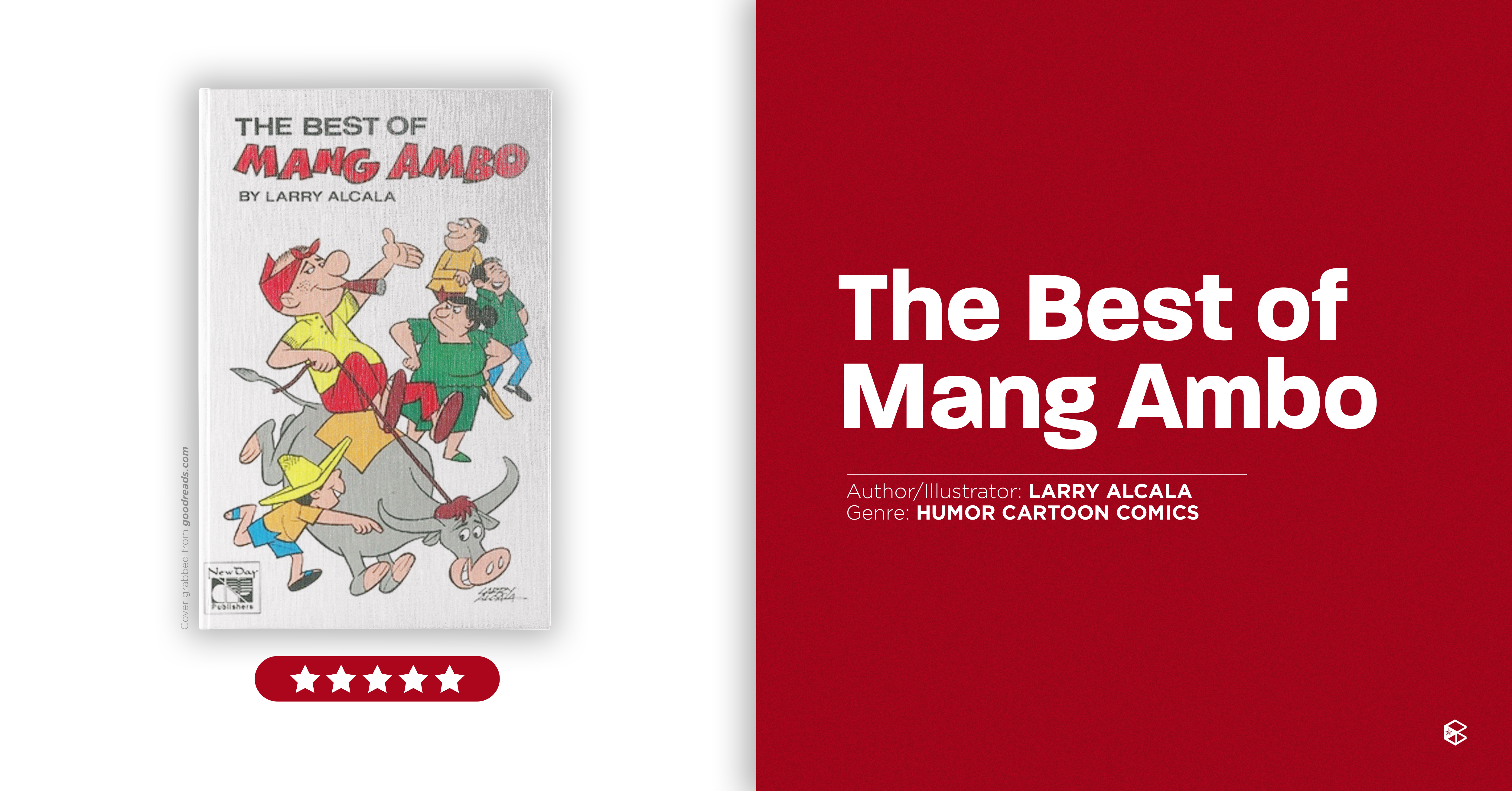Nothing beats the simplicity of barrio life. It may not be everyone’s cup of lambanog, but the adventures of Mang Ambo and the residents of fictional Barrio Bulabog would convince even the most city-loving individual to relax in the countryside and breathe in the fresh air.
These barrio antics began in 1960 when it was first printed in a weekly magazine, and were later compiled and published in book forms. From 1991 to 1994, the Manila Standard turned “Mang Ambo” into a daily comic strip feature that might have put a rare smile on a serious broadsheet-reading banker. We can thank one man for all the laughs.
A legend in the local comic scene, Larry Alcala was hailed by his contemporaries as the Filipino cartoonist’s cartoonist, possessing the magic of creating simple, hilarious yet greatly impactful stories. His other works include the hilarious Kalabog en Bosyo, Asiong Aksaya, and Slice of Life. His cartoons gained international recognition through exhibits abroad and have garnered him a multitude of awards including the Outstanding Writer-Artist in 1970 awarded by the Citizens Council for Mass Media, and the Catholic Mass Media Awards Best in Humor in 1988. Even after passing away in 2002, Larry Alcala lives on through his works, showing that no matter how full of troubles life may be, there is always room for laughter and fun.
As of recent publishing, “Mang Ambo” spans three books printed by New Day Publishers. The stories follow no particular order but are categorized according to topic, allowing the reader to quickly flip to a random page if they want a quick laugh. And like his other works, Alcala used Taglish for the Mang Ambo stories. Depending on the reader, when you have a probinsyano protagonist speaking mostly English, it may come across as odd as it would probably be the last language they would choose to speak in. Nevertheless, it adds a certain sitcom charm to Alcala’s drawings and stories.
Some things never change
The character of Mang Ambo is often called a caricature of the typical Filipino. Witty, resourceful, lazy, and sometimes overly-confident in his abilities, our kamisatsino-clad kumpadre makes Filipino readers end up laughing at themselves.
Featured alongside Mang Ambo are a variety of memorable characters who are also mere reflections of ourselves and the people we see around us; from his fierce, nagging wife Orang to his constantly confused nephew Tonyo (with whom I personally relate to the most). Though most of the stories are set far from the pollution and towering buildings of the city, Filipinos from every corner of the country can relate to a Mang Ambo story in one way or another.
What makes “Mang Ambo” such a masterpiece of a cartoon comic series is that it is also a critique of Filipino society that is still relevant today. Satirical panels take a jab at the state of politics and the economy in the late 20th century Philippines with Mang Ambo going behind the scenes of the rich and powerful. Alcala also took inspiration from certain issues that were happening during a certain period and incorporated them into Mang Ambo’s Barrio Bulabog. Some of these stories were compiled under titles such as “Lahar Scam,” “Formalin Scare,” and “VAT is Dat?”
There is always a way around things
Mang Ambo is the epitome of chill. After flipping through the yellowing pages of my “Mang Ambo” copies, I am almost always tempted to stop what I am doing and just laze around for a bit knowing that the things that I worry about will turn out just fine. Although laziness is never a good trait to commend, sometimes taking a step back from everything, breathing a bit, and looking on the bright side of life is what we all need to get through our daily struggles and Mang Ambo certainly reminds us to do so.
It is also through stepping back that we see the troubles of others. Alcala used “Mang Ambo” as a means to point out national issues, as a reminder there are other people who need a bit of cheering up. Most importantly, his stories always remind us that even the toughest problems have a solution—sometimes we just need a swig of lambanog to help us come up with one.
As “Mang Ambo” turns 60 this year, a proper celebration calls for parking your carabao cart, sitting in the shade of a guava tree, and flipping through the pages of Larry Alcala’s hilarious and enduring cartoon series.
“The Best of Mang Ambo” Books 1 and 2 and “The Latest of Mang Ambo” are all available at http://www.newdaypublishers.com/


